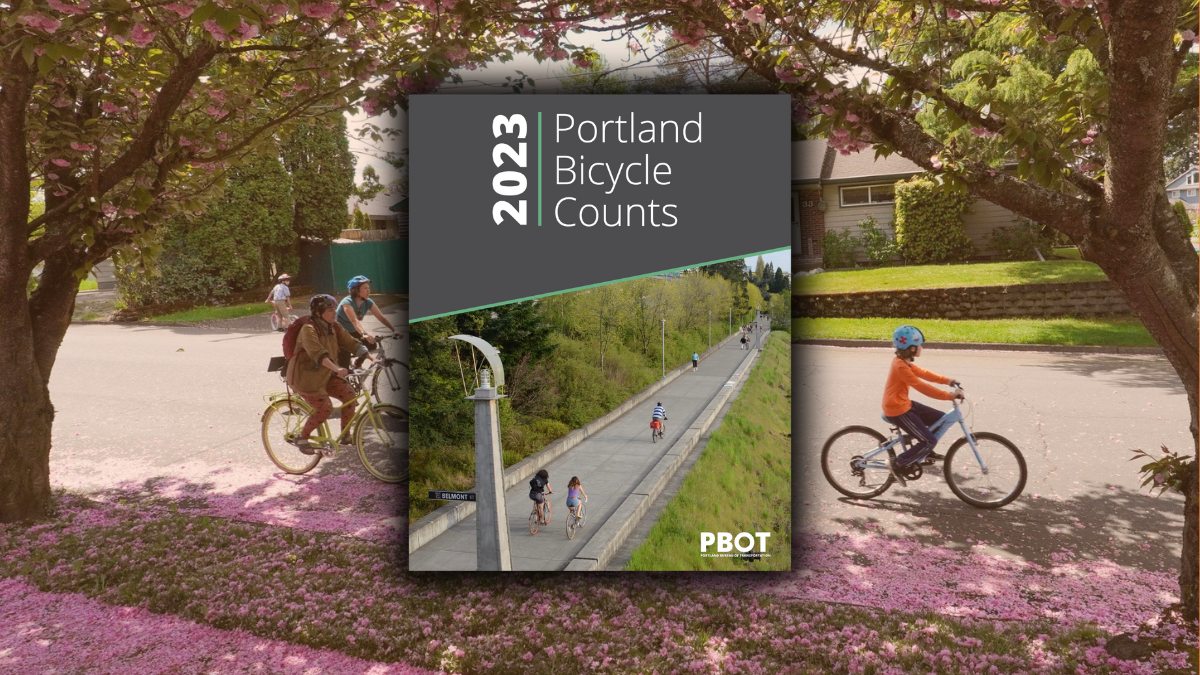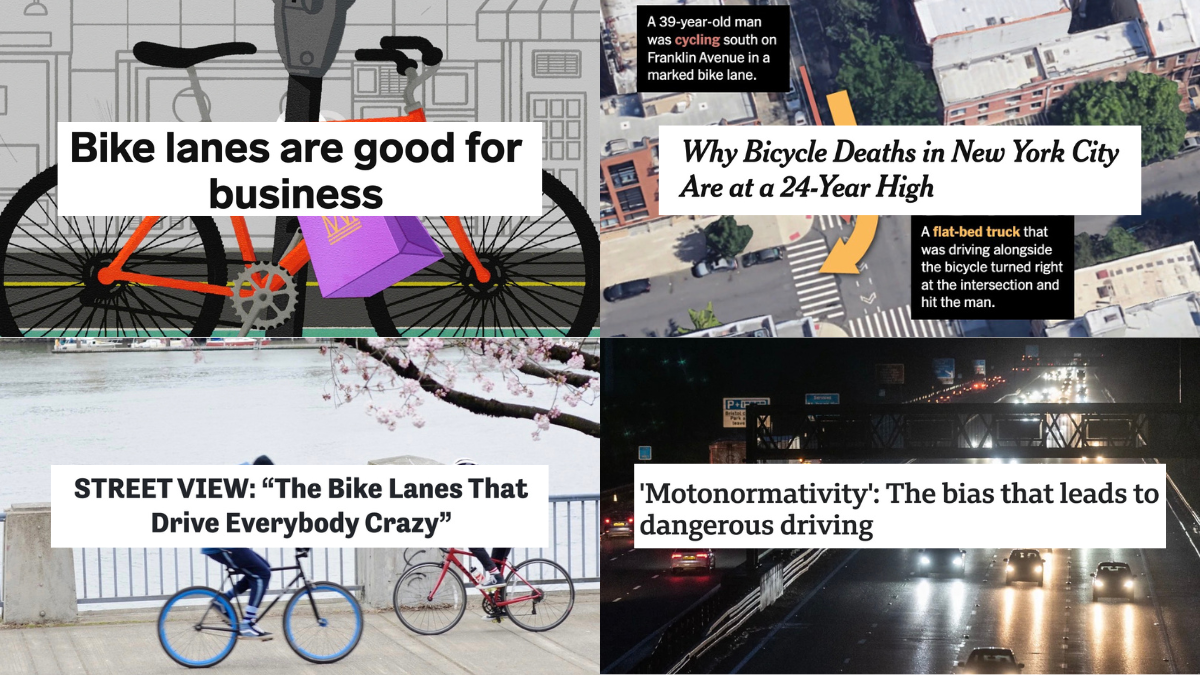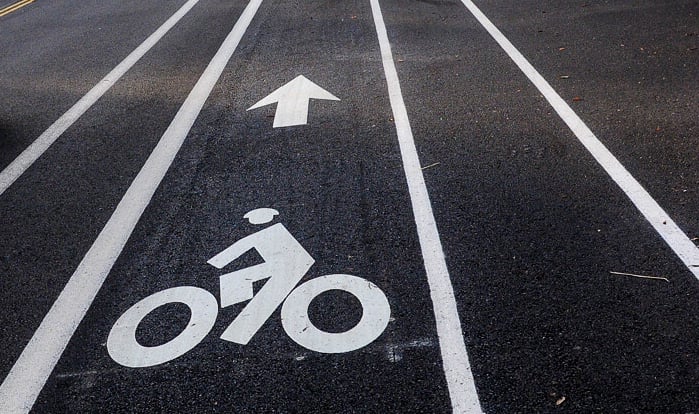In the next month or so, the Portland Bureau of Transportation (PBOT) will break ground on a $17 million investment into Southwest 4th Avenue. The project will rebuild and repave this key northbound corridor through downtown from Lincoln to Burnside and add a protected bikeway and many other upgrades. Once complete, PBOT Bicycle Coordinator Roger Geller said, “The 4th Avenue protected bike lane is going to be the premier northbound bike lane through downtown.”
But a high quality bikeway is only as good as the connections to it. And as PBOT staff heard loud and clear last night, if the city is not willing to battle the car-centric status quo to create a high-quality connection, projects like the one planned on SW 4th Avenue will not reach their potential.
At the first in-person meeting of the Bicycle Advisory Committee in four years (!) on Tuesday night, PBOT Planner Corrine McQueen asked for feedback on six different options the city has sketched out to get bicycle riders from the existing bike lane on SW Terwilliger to northbound SW 4th. McQueen leads the Southwest in Motion (SWIM) plan, which is where the need for a Terwilliger-to-4th connection arose, and said at the meeting last night, “We view this as a huge opportunity to integrate this SWIM project with the SW 4th project.”
Terwilliger (SW 6th north of I-405) is a popular route with a bike lane but it’s separated from 4th by two blocks of multi-lane, one-way streets. And they aren’t just any streets. Due to their proximity to I-405 and the use of streets in this area as de-facto freeway ramps, the confluence of SW Barbur, Broadway, Caruthers and Sheridan are a loud and busy nightmare for anyone not inside a car.
McQueen laid out the six detailed options and went over a lengthy list of pros and cons for each one. Before I get into how BAC members responded, I’ll share the slide for each option:






After BAC members shared a few general opinions with McQueen and Geller, BAC Chair Ally Holmqvist took an informal poll. Options 2B and 2C were the favorites. But as the discussion continued, it became clear that none of the options were a clear winner, and that all the options would require strong law enforcement to work (and to keep bicycle riders safe). Several BAC members expressed that none of the options passed muster and said they’d rather keep riding on Terwilliger/6th across I-405 and then cut over to 4th further north.
“What if bicycles were the priority here and you could do anything you wanted — and the cars had to be displaced?
– Joe Perez, BAC vice-chair
Then BAC Vice-Chair Joe Perez said what was I thinking in my own head as I sat and observed the meeting. “What if bicycles were the priority here and you could do anything you wanted — and the cars had to be displaced? When is that going to be an option on the table? It seems like you’re trying to make bicycling more attractive than driving, you’re trying to make walking more attractive to driving, you’re trying to make transit more attractive than driving? Why are we not doing that with this project?”
“Well, get three votes with this on council,” Geller responded.
To which Perez said, “Well, there will be a new council in January, so maybe we should delay this decision until then… You’re putting us in a difficult situation, to pick the least worst of the worst options.”
Perez’s sentiments were echoed by a few other BAC members, who now felt empowered to say something similar now that he’d broken the ice.
“I agree completely,” said committee member Alon Raab. “It’s been an issue since I became a member of the committee and I’ve been thinking about that gap between what I want and what seems to be possible within this current city council.”
And Cameron Bennett added,
“It seems like the barrier we’re up against is that we just have a wildly high volume of vehicle through traffic in this area… Is there any higher-level conversation about reorganizing vehicle movement patterns in this area? Because that could free up a lot of flexibility to do more with this project or to provide some more straightforward solutions. It just seems like there’s a lot of complexity here that maybe could be dialed-down with significant capacity reductions.
At the end of the day, if we’re going to be true to our plans at the city level, that’s got to be part of the conversation, right? To make it harder to drive and reduce the volume of people driving.”
McQueen, the project manager, acknowledged that adjusting car traffic patterns hadn’t been considered by PBOT, “But it’s definitely worth considering,” she replied.
While other options are considered, PBOT needs a recommendation from the BAC in the next few months to get this project aligned with construction of the larger SW 4th Avenue project. Despite the spicy comments at the meeting, there is a strong sense that getting something done in the short-term to connect to 4th is important. The BAC plans to meet for a tour of the area in the coming weeks to better understand the issues and help inform a recommendation.
Stay tuned for developments and let us know what you think. Do you move through this area? How would you prefer to get from Terwilliger northbound to 4th Ave?
























